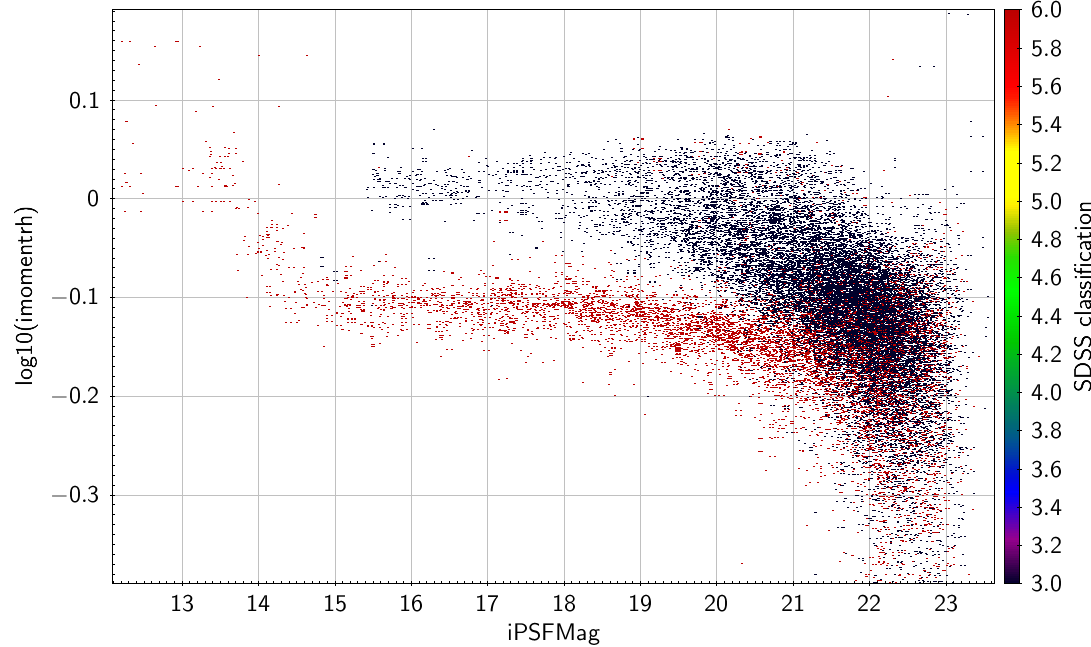Page History
| Tip | ||||||
|---|---|---|---|---|---|---|
| ||||||
|
PSF-Kron
The simplest way is to use the difference between PSFMag and KronMag. This has the advantage that it is available for all objects in the survey and in all the main tables.
...
Faintward of i ~21 this simple cut becomes unreliable (usually over-predicts the number of stars). Also be aware that once stars become saturated (brighter than i ~14 in this example) they shift to the galaxy side of the cut. A full discussion of this method applied to Pan-STARRS data can be found in Farrow et al. (2014).
psfLikelihood
StackObjectAttributes (or StackObjectView) has a quantity psfLikelihood for each filter. This is around 0 for galaxies but can be either +1 or - 1 for stars. The best way to see what is happening is to plot a quantity like log10(abs(psfLikelihood))
...
Same sample as above, but now with log10(imomentRH) as the separator. |
|---|
Other suggestions
The various model fits (Sersic, Exp, deVauc, Petrosian) also have radii associated with them, so you could try using mag v log(radius) for these, but remember they are not available for all objects.

